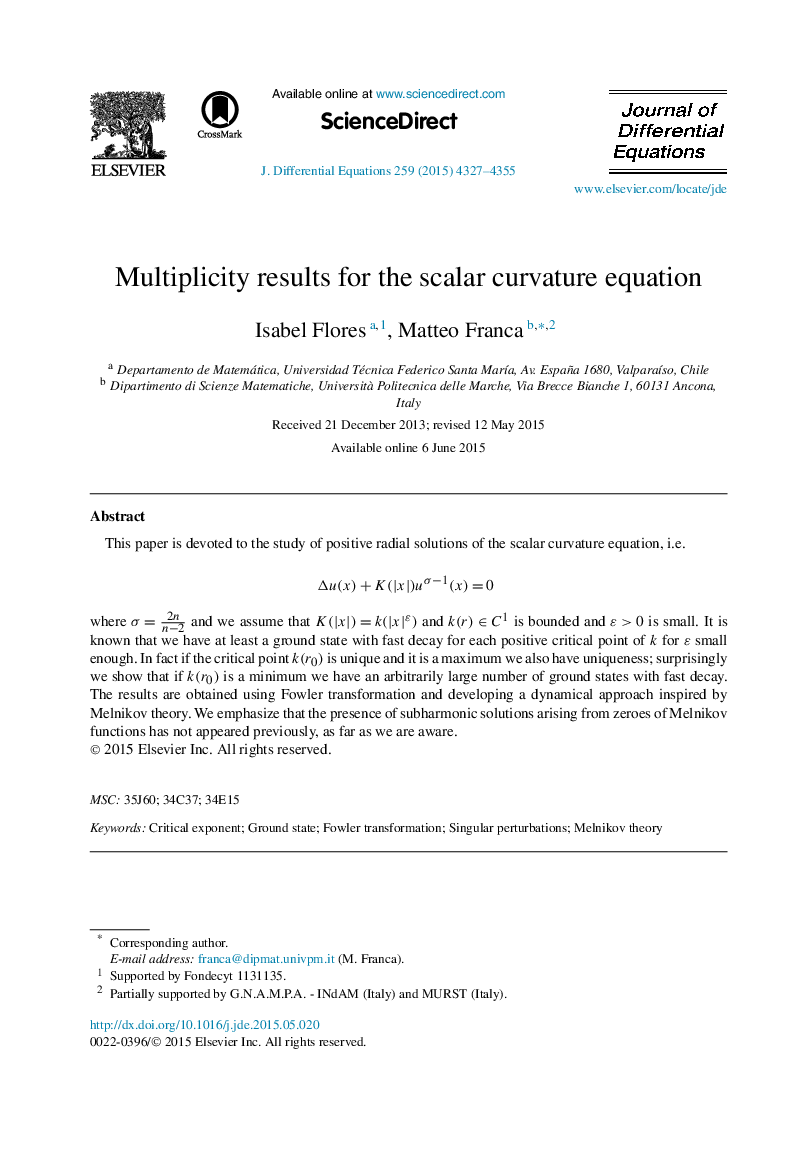| Article ID | Journal | Published Year | Pages | File Type |
|---|---|---|---|---|
| 4610106 | Journal of Differential Equations | 2015 | 29 Pages |
•We find a curvature K(r)K(r) with a unique minimum, but the scalar curvature equation has many ground states with fast decay.•We give an example where the derivative of a zero of the Melnikov function decides between a unique or multiple homoclinics.•We derive a Melnikov approach which requires just Lipschitz regularity and allows very degenerate zeroes.
This paper is devoted to the study of positive radial solutions of the scalar curvature equation, i.e.Δu(x)+K(|x|)uσ−1(x)=0Δu(x)+K(|x|)uσ−1(x)=0 where σ=2nn−2 and we assume that K(|x|)=k(|x|ε)K(|x|)=k(|x|ε) and k(r)∈C1k(r)∈C1 is bounded and ε>0ε>0 is small. It is known that we have at least a ground state with fast decay for each positive critical point of k for ε small enough. In fact if the critical point k(r0)k(r0) is unique and it is a maximum we also have uniqueness; surprisingly we show that if k(r0)k(r0) is a minimum we have an arbitrarily large number of ground states with fast decay. The results are obtained using Fowler transformation and developing a dynamical approach inspired by Melnikov theory. We emphasize that the presence of subharmonic solutions arising from zeroes of Melnikov functions has not appeared previously, as far as we are aware.
